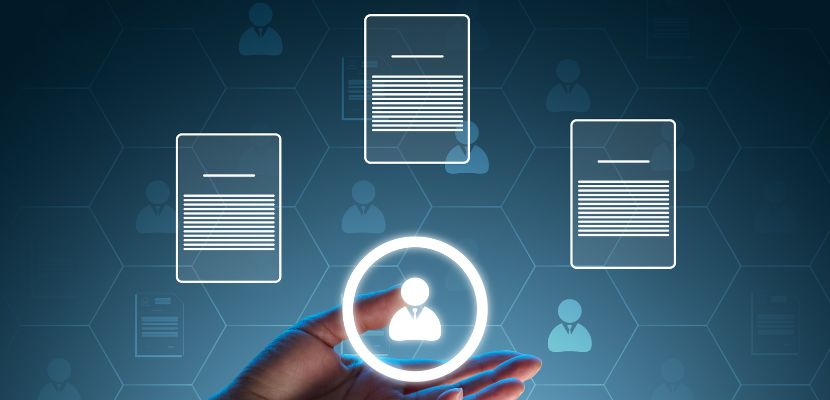Enterprise mobility management (EMM) is a framework of technologies, policies, and processes designed to secure and manage mobile devices, applications, and data in a corporate environment.

What Is Enterprise Mobility Management (EMM)?
Enterprise mobility management (EMM) is a comprehensive approach to securing and managing mobile devices, applications, and data within an organization. It encompasses a range of technologies and policies designed to enable employees to use mobile devices for work while ensuring compliance with security and regulatory requirements. EMM solutions provide centralized control over corporate and personal devices, allowing IT administrators to enforce security policies, configure device settings, manage application access, and protect sensitive data.
These solutions often integrate with identity and access management (IAM) systems to enforce authentication protocols and control access to corporate resources. Advanced EMM platforms also include data encryption, remote wipe capabilities, network security controls, and real-time monitoring to detect and mitigate potential threats.
What Are the Components of Enterprise Mobility Management?
Enterprise mobility management consists of several integrated components that work together to secure and manage mobile devices, applications, and data within an organization. These components include:
- Mobile device management (MDM). Provides centralized control over mobile devices, allowing IT administrators to enforce security policies, configure settings, and remotely monitor, lock, or wipe devices to protect corporate data.
- Mobile application management (MAM). Focuses on securing and controlling access to business applications, ensuring that only authorized users can install, update, and interact with corporate apps while keeping personal apps separate.
- Mobile content management (MCM). Manages access to corporate documents and data, ensuring that sensitive information is securely stored, shared, and accessed only by authorized users, often with encryption and usage restrictions.
- Identity and access management (IAM). Enforces authentication and authorization policies, such as multi-factor authentication (MFA) and single sign-on (SSO), to regulate access to enterprise applications and data.
- Mobile security. Includes encryption, threat detection, network security measures, and compliance monitoring to protect devices, applications, and data from cyber threats, malware, and unauthorized access.
- Expense management. Tracks and optimizes mobile device usage, including data consumption and roaming charges, to control costs associated with enterprise mobility.
What Is an Example of Enterprise Mobility Management?

An example of EMM is Microsoft Intune, a cloud-based service that enables organizations to manage mobile devices, applications, and data security. It allows IT administrators to enforce security policies, control access to corporate resources, and ensure compliance across various mobile and endpoint devices.
With Intune, organizations can implement mobile device management to enforce security settings, remote wipe lost or stolen devices and ensure compliance with company policies. It also supports mobile application management by securing corporate apps and data on both company-owned and personal devices, enabling a bring-your-own-device (BYOD) strategy while maintaining security. Additionally, Intune integrates with Microsoft Entra ID (formerly Azure AD) for identity and access management, providing features like single sign-on and multi-factor authentication for secure access to corporate applications.
What Is Enterprise Mobility Management Used For?
EMM is used for several key purposes, ensuring secure and efficient mobile device usage within an organization. These include:
- Device security and management. EMM helps protect company-owned and employee-owned devices by enforcing security policies, managing configurations, and enabling remote wipe or lock functions in case of loss or theft.
- Application control and security. Organizations use EMM to manage and secure enterprise applications, ensuring that only authorized users can install, access, and update business apps while preventing data leakage.
- Data protection and compliance. EMM enforces encryption, access controls, and data loss prevention (DLP) policies to safeguard corporate data, ensuring compliance with industry regulations like GDPR, HIPAA, and SOC 2.
- Access management and authentication. With features like single sign-on and multi-factor authentication, EMM ensures secure access to enterprise applications, protecting against unauthorized access and identity threats.
- Bring-your-own-device (BYOD) management. EMM allows organizations to enable BYOD policies by separating personal and corporate data on employee devices, ensuring security without compromising user privacy.
- Remote work enablement. By providing secure access to corporate applications and data, EMM enables employees to work remotely while maintaining security and compliance across mobile and endpoint devices.
- Cost and usage optimization. EMM solutions track mobile device usage, data consumption, and application performance, helping organizations control costs and optimize mobile infrastructure.
Enterprise Mobility Management Best Practices
Implementing EMM effectively requires a strategic approach to security, compliance, and user experience. Here are the best practices organizations should follow:
- Define a clear mobility policy. Establish guidelines for mobile device usage, including security requirements, acceptable applications, access controls, and compliance expectations for both corporate-owned and BYOD devices.
- Implement role-based access controls (RBAC). Restrict access to corporate data and applications based on user roles, ensuring that employees only have access to the resources necessary for their job functions.
- Enforce strong authentication and security measures. Utilize multi-factor authentication, single sign-on, and biometric authentication to enhance security and prevent unauthorized access to corporate data.
- Use mobile application management for BYOD. Secure enterprise applications separately from personal data on employee-owned devices to maintain privacy while protecting corporate assets.
- Enable data encryption and secure storage. Ensure that sensitive data is encrypted both in transit and at rest, reducing the risk of data breaches if a device is lost or compromised.
- Monitor and enforce compliance in real time. Continuously track device security status, application usage, and compliance with company policies, leveraging automated alerts and remediation actions for non-compliant devices.
- Utilize remote wipe and lock features. Implement remote management capabilities to lock, wipe, or reset devices that are lost, stolen, or compromised to prevent unauthorized access to corporate information.
- Regularly update and patch devices and applications. Ensure that all managed devices and apps receive the latest security updates and patches to mitigate vulnerabilities and protect against emerging threats.
- Educate employees on mobile security. Provide ongoing training and awareness programs to help employees recognize security threats, phishing attempts, and best practices for safe mobile device usage.
- Integrate EMM with other security solutions. Combine EMM with endpoint detection and response (EDR), IAM, and threat intelligence platforms to create a comprehensive security framework.
What Are the Benefits and Challenges of Enterprise Mobility Management?
Enterprise mobility management offers significant advantages by enhancing security, productivity, and compliance in a mobile-driven workplace. However, implementing EMM also comes with challenges, such as balancing security with user experience and managing diverse device ecosystems. Understanding both the benefits and challenges of EMM helps organizations develop a strategy that maximizes mobility while mitigating risks.
Benefits of Enterprise Mobility Management
EMM provides organizations with the tools to secure mobile devices, manage applications, and protect corporate data while enabling a more flexible and productive workforce. Here are its other benefits:
- Enhanced security. EMM enforces security policies such as encryption, remote wipe, and multi-factor authentication, protecting corporate data from unauthorized access, malware, and data breaches.
- Improved compliance. Organizations can ensure compliance with industry regulations like GDPR, HIPAA, and SOC 2 by implementing security controls, access restrictions, and monitoring tools to protect sensitive information.
- Better device and application management. EMM provides centralized control over mobile devices and applications, allowing IT teams to enforce policies, push updates, and manage configurations efficiently.
- Support for BYOD and corporate devices. By separating corporate and personal data, EMM enables secure BYOD policies while maintaining privacy and security on employee-owned devices.
- Increased workforce productivity. Employees gain secure access to corporate applications and data from anywhere, improving collaboration and efficiency without compromising security.
- Cost optimization. Organizations can track mobile usage, reduce unnecessary data consumption, and prevent unauthorized app installations, leading to better control over mobile-related expenses.
- Remote work enablement. EMM ensures secure access to corporate resources for remote employees, enabling seamless work-from-anywhere capabilities while maintaining security and compliance.
Challenges of Enterprise Mobility Management
While EMM enhances security and productivity, organizations often face several challenges when implementing and maintaining an effective mobility strategy:
- Balancing security and user experience. Strict security policies, such as multi-factor authentication and restricted app usage, can hinder employee productivity and lead to user frustration if not implemented with usability in mind.
- Managing a diverse device ecosystem. Organizations must support a wide range of devices, operating systems, and manufacturers, each with different security capabilities and update cycles, making standardization difficult.
- BYOD security and privacy concerns. Allowing employees to use personal devices for work raises challenges in protecting corporate data while respecting user privacy, requiring a fine-tuned approach to data separation and access control.
- Compliance and regulatory requirements. Ensuring that mobile devices meet industry-specific regulations (e.g., GDPR, HIPAA, SOC 2) can be complex, as non-compliance may lead to security breaches and legal consequences.
- Threats from mobile cyber attacks. Mobile devices are increasingly targeted by phishing, malware, and unauthorized access attempts, making it essential to implement continuous monitoring and threat detection mechanisms.
- Device and application lifecycle management. Keeping all mobile devices, apps, and operating systems up to date with security patches and feature updates requires constant oversight and automated policy enforcement.
- High implementation and maintenance costs. Deploying a robust EMM solution involves investment in software, infrastructure, and IT personnel, with ongoing costs for support, updates, and compliance audits.
- Integration with existing IT infrastructure. Ensuring seamless integration between EMM, identity management, endpoint security, and corporate networks can be complex, requiring a well-planned approach to avoid compatibility issues.
- Employee resistance to EMM policies. Some employees may resist corporate control over their devices, especially in a BYOD setup, necessitating clear communication about security benefits and privacy safeguards.
EMM vs. MDM
Here’s a comparison table highlighting the key differences between EMM and MDM:
| Feature | Enterprise mobility management (EMM) | Mobile device management (MDM) |
| Scope | Manages devices, applications, content, and security. | Primarily focuses on device-level management. |
| Focus area | Security, compliance, app management, and data protection. | Device provisioning, configuration, and control. |
| Device control | Manages both corporate and personal (BYOD) devices with data separation. | Controls entire device, often requiring full corporate ownership. |
| Application management | Includes Mobile Application Management (MAM) to control app access and security. | Limited app control, mainly focuses on enforcing app installations and restrictions. |
| Content management | Mobile Content Management (MCM) allows secure access to enterprise data and documents. | Minimal or no built-in content management features. |
| Security features | Provides advanced security policies, encryption, and threat detection. | Implements basic security controls like remote wipe and password enforcement. |
| User authentication | Integrates with Identity and Access Management (IAM) for SSO and MFA. | Typically lacks IAM integration, relying on device-level security. |
| BYOD support | Allows personal device use while keeping corporate data separate. | Less suited for BYOD as it enforces control over the entire device. |
| Compliance & governance | Ensures compliance with industry regulations (e.g., GDPR, HIPAA). | Basic compliance enforcement through device policies. |
| Management complexity | More complex due to broader security and app control. | Easier to implement but limited in functionality. |
| Use case | Best for organizations managing security, apps, and compliance on multiple device types. | Suitable for businesses that need strict control over corporate-owned devices. |